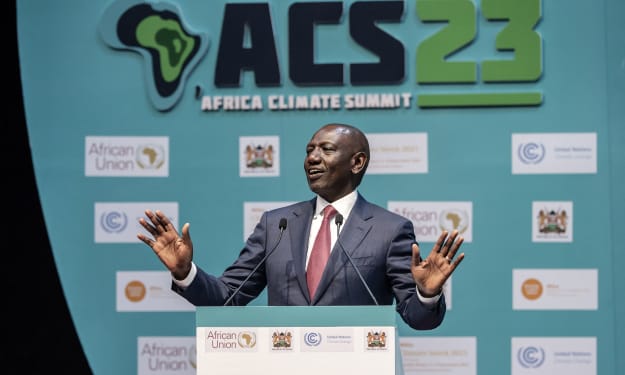Climate Finance (Part 1): Available, Accessible, and Affordable for All
Unpacking the Path to Sustainable Climate Finance

During the recently concluded Africa Climate Summit, with its central theme focusing on climate finance and green growth, President H.E. William Ruto delivered a powerful message resonating with the urgent needs of the African continent. He emphasized that climate finance must become accessible, available, and affordable in Africa. In this first installment of our four-part series, we'll dive deep into the world of climate finance, elucidating its intricacies, its beneficiaries, and the current structures in place.
Understanding Climate Finance
Climate finance constitutes a crucial pillar in the global fight against climate change. It represents the financial resources allocated to address and mitigate the impacts of climate change. These resources can be employed for various purposes, including:
- Mitigation: Reducing greenhouse gas emissions through initiatives like renewable energy projects, reforestation, and energy efficiency improvements.
- Adaptation: Building resilience to the impacts of climate change through measures such as infrastructure upgrades, disaster preparedness, and community-based adaptation projects.
How Does Climate Finance Work?
Climate finance is typically provided through a range of mechanisms, including grants, loans, and equity investments. Grants often come from governments and international organizations, while loans and equity investments are extended by commercial banks and private sector entities. These funds are meant to support initiatives that contribute to climate change mitigation and adaptation.
Who Should Benefit from Climate Finance?
The beneficiaries of climate finance should encompass a broad spectrum, but it is particularly vital for developing nations and vulnerable communities. Developing countries, including those in Africa, are disproportionately affected by climate change, and thus, they should be prioritized for support. The focus should extend to the grassroots level, benefiting local communities and small-scale enterprises.
Current Structures of Climate Finance
However, the existing structures of climate finance have raised significant challenges, particularly for African businesses and organizations invested in green growth. It is noteworthy that many of the institutions providing access to climate financing are predominantly based in regions that have historically contributed significantly to the climate crisis. Paradoxically, these institutions often establish terms and requirements that can be inaccessible and impractical for African stakeholders.
Challenges Faced by African Businesses and Organizations
The challenges faced by African businesses and organizations in accessing climate finance are manifold:
- Lack of Awareness: Many potential beneficiaries are unaware of the availability of climate finance opportunities.
- Complex Application Processes: Cumbersome and time-consuming application procedures deter prospective applicants.
- High Collateral Demands: Stringent collateral requirements create barriers, especially for smaller entities.
- Technical Expertise Gap: Preparing comprehensive climate finance proposals often requires specialized knowledge and capacity.
- Limited Access to Intermediaries: A scarcity of financial intermediaries capable of disbursing climate finance to small businesses and community groups further exacerbates the problem.
A Call for Change
President Ruto's statement underscores the urgent need to reevaluate and reform the terms and conditions set forth by financiers. The current framework often directs climate finance toward established and well-known organizations with high overhead costs, neglecting smaller entities and community groups that are actively implementing sustainable and impactful climate projects on the ground.
It is imperative to transition to a model where climate finance is genuinely available, accessible, and affordable for all. By recalibrating the terms and conditions, we can ensure that climate finance reaches the hands of those working directly on the front lines of climate action, even if they may not meet the stringent requirements that have been historically designed to benefit only a few.
In the upcoming segments of this series, we'll roll up our sleeves and dive into some promising avenues. We'll dissect the inner workings of climate finance infrastructures, shed light on the world of global green bonds as a source for private investment, and unravel the strategies to derisk private investments in climate change initiatives across Africa. Stay tuned as we navigate these critical aspects of climate finance and green growth.
About the Creator
Chela Kikwai
Passionate about climate action and sustainability, I raise awareness and promote climate education through my articles. Read, Learn, Follow, Tip and Share






Comments
There are no comments for this story
Be the first to respond and start the conversation.